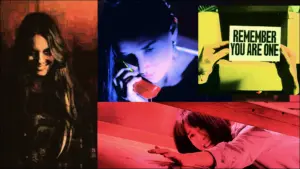In 1994's The Crow, a recently resurrected Eric Draven (the late, great Brandon Lee) is able to figure out everything he needs to know while listening to The Cure and making a "Get Ready With Me" tutorial in the remains of his destroyed loft.
In the original script, however, he had a helping hand to figure out his powers. That helping hand was a deleted character called the Skull Cowboy, played by character actor Michael Barryman. The Skull Cowboy is a spirit guide who explains the guidelines of immortality and his new powers, including the most important rule of all: Do not deviate from the path of revenge.
Apparently, Eric was brought back for one purpose only: revenge. To detour from that goal would defeat the purpose of his resurrection, no matter the reason. For example, after Eric removes the morphine from Darla's (Anna Thomson) body, there was a cut scene that showed him unable to heal as punishment for veering off his given path and using his gift to help, rather than vengeance.
When Eric saves Sarah at the church, the Skull Cowboy tells him there will be dire consequences for his actions, including the loss of his powers and the possibility of becoming the walking dead. When he discovers that Top Dollar (Michael Wincott) had a direct hand in his demise and Shelley’s assault, his path is righted, and he regains his powers. After he defeats Top Dollar, he chooses to return to Shelley instead of remaining as The Crow.
The purpose of the character was to show Eric that he wasn’t the first to be chosen with this power, and there are consequences for making the wrong decision. However, the scenes with Skull Cowboy were cut after the tragic death of Lee on set, as not all of the scenes were filmed and there was no work-around without him. The story was changed so The Crow's powers were linked to his raven.
See also: This interview with the film's co-screenwriter, David J. Schow.
















































